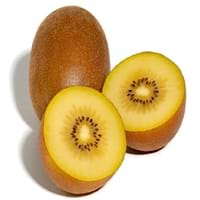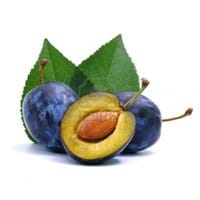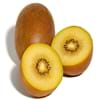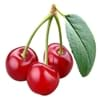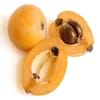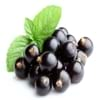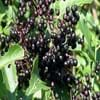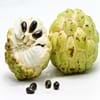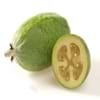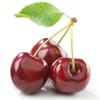Health Benefits
Asthma treatment, Heart care, Improves stomach health, Regulation of heart rate, Treatment of skin Diseases
Cancer prevention, Cures gastro-intestinal troubles, Heart care, Increase in haemoglobin, Prevents high blood pressure
General Benefits
Boosts immune system, Controls blood pressure, Eye care, Helps in weight loss
Anti-inflammatory properties, Boosts immune system, Digestive aid, Eye care, Flu treatment, Helps in weight loss, Maintains healthy cholesterol level, Treatment of common cold
Skin Benefits
Brightens and lightens complexion, Heals sunburn, Reduces wrinkles, Skin rejuvenation, Treatment of acne, Treatment of dark spots, Treatment of skin diseases
Anti-aging benefits, Brightens and lightens complexion, Reduces wrinkles, Skin revitalization, Treatment of dark spots
Hair Benefits
Prevents hair loss, Promotes longer and healthier hair, Treatment of dandruff
Prevents hair loss, Promotes longer and healthier hair, Protects hair, Remedy for split ends, Treatment of dandruff
Allergy Symptoms
Abdominal pains, Anaphylaxis, Breathing difficulty, Itching in tongue and other parts of mouth, Itching sensation in throat, Swelling of mouth, tongue or lips, Vomiting
Abdominal pains, Anaphylaxis, Vomiting
Side Effects
Allergic reaction, Diarrhoea, Skin rash, Possibly unsafe during pregnancy
Allergic reaction
Best Time to Eat
Any time except an hour after meal
As a snack in the late afternoon, Don't consume at night and before bed, Don't eat after meal, Morning time (before lunch)
Vitamin B5 (Pantothenic Acid)
Vitamin C (Ascorbic Acid)
Vitamin K (Phyllochinone)
Phytosterol
Not Available
Calories in Fresh Fruit with Peel
Calories in Fresh Fruit without Peel
Not Available
Not Available
Calories in Frozen Form
Not Available
Season
Spring, Summer, Winter
Summer
Varieties
Qing Yuan #27, Qing Yuan #29, Qing Yuan #6 and Huang Yan
Merryweather Damson, Shropshire Prune, President plum, Damson farleigh and Damson langley bullace
Color
Brown, Yellow
Dark purple
Inside Color
Yellow
Yellow
Taste
Sweet
Juicy, Sweet, Tart
Soil Type
Well-drained
Clay, Loam, Moist, Sandy loam, Well-drained
Climatic Conditions
Cold, Sunny
Cold
Facts about
- The name Kiwi is due to its resemblance with 'Kiwi' bird.
- This variety of Kiwi was developed by New Zealand, it is not fuzzy on the outside and it has a taste reminiscent of the mango fruit.
- The name Damson originates from the original name 'Damacus plum'.
- Damson wine was very popular in 19th century.
- This fruit is often used in jams due to its slightly tart behaviour.
Top Producer
Italy
United Kingdom
Other Countries
Chile, France, Greece, Iran, Japan, New Zealand, Portugal, Turkey, United States of America
Ireland, United States of America
Top Importer
United States of America
United States of America
Top Exporter
New Zealand
France
Botanical Name
Actinidia chinensis
Prunus domestica subsp. insititia
Synonym
Not Available
Not Available
Subkingdom
Tracheobionta
Tracheobionta
Division
Magnoliophyta
Magnoliophyta
Class
Magnoliopsida
Magnoliopsida
Subclass
Dillenhidae
Rosidae
Family
Actinidiaceae
Rosaceae
Species
A. chinensis
Prunus domestica subsp. insititia
Generic Group
Kiwi
Not Available
Difference Between Gold Kiwi and Damson
We might think that Gold Kiwi and Damson are similar with respect to nutritional value and health benefits. But the nutrient content of both fruits is different. Gold Kiwi and Damson Facts such as their taste, shape, color, and size are also distinct. The difference between Gold Kiwi and Damson is explained here.
The amount of calories in 100 gm of fresh Gold Kiwi and Damson with peel is 60.00 kcal and 46.00 kcal and the amount of calories without peel is Not Available and Not Available respectively. Thus, Gold Kiwi and Damson belong to Low Calorie Fruits and Low Calorie Fruits category.These fruits might or might not differ with respect to their scientific classification. The order of Gold Kiwi and Damson is Ericales and Rosales respectively. Gold Kiwi belongs to Actinidiaceae family and Damson belongs to Rosaceae family. Gold Kiwi belongs to Actinidia genus of A. chinensis species and Damson belongs to Prunus genus of Prunus domestica subsp. insititia species. Beings plants, both fruits belong to Plantae Kingdom.
